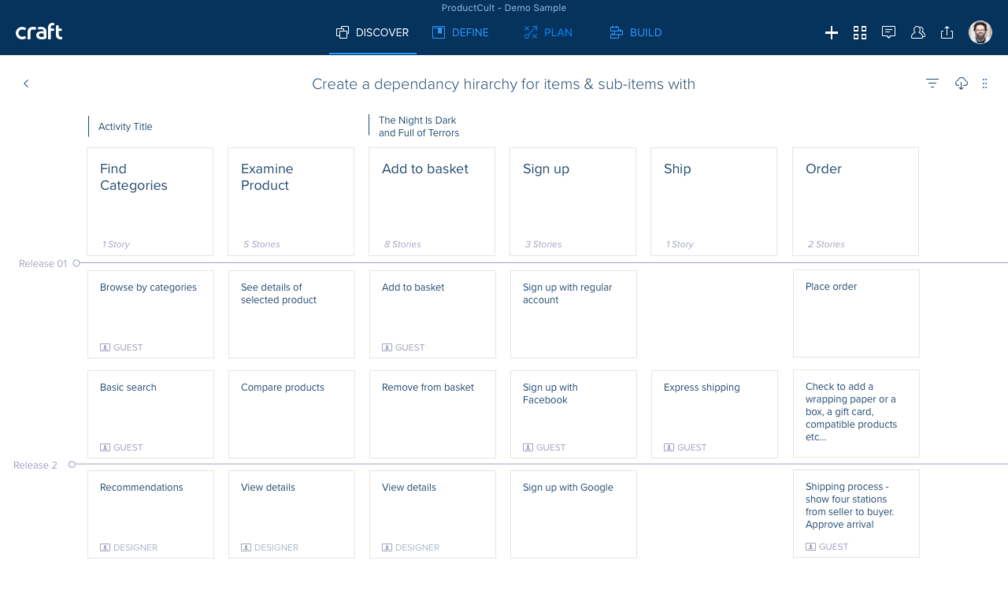Home > Blog > 3 Glorious Mistakes to Avoid in Story Maps
3 Glorious Mistakes to Avoid in Story Maps

Story mapping is perhaps the most imaginative stage of product development and as such, needs to be treated like a form of art rather than a project. The most challenging thing about creating the infrastructure for your product’s user stories, is the need to harness all that imaginative-ness into a structured, actionable framework.
How do we do that? With the growth of agile practices came a variety of mind mapping tools that allow us to unleash our storytelling skills while capturing a linear process and maintaining a hierarchy of essential and derivative. Which brings us to mistake-to-avoid no. #1:

Don’t Allow Yourself to get Lost in the Details
The process of story map building is similar to stream of consciousness: you get the ball rolling and it’s hard to stop – one scenario leads to another, stories become intricate and diverge, sub-stories emerge alongside possible complications and so forth.
This is an addictive, hyper-creative trip… that needs to be curbed. Stories tend to bubble onto the surface unstoppably and it is painfully easy to lose sight of your product vision and go down rabbit holes you had no idea existed.
Structured story mapping is all about starting from the big picture and going down to detail level when you feel you have a grip on the linear story. Curbing the imaginative roller-coaster is not easy. It is a proficiency one develops with time and through will and focus.
It’s a Mind-map, Not a Grocery List
The post-it method was developed as an intermediate outlet for a process that is creative yet linear: throw your ideas on a wall with as little restraints as possible, but make sure they still have form and method.
That is why using a visual story mapping tool is so important to the agile process: you need to be able to see how the story progresses with your eyes. Seeing the words is simply not enough for organizing what is essentially a journey. This is our version of describing events and giving substance and shape to an idea.
In Craft’s story mapping section, we consciously decided to leave out color schemes and the option to color code certain stories, in order to avoid visual overload and blind spots created by less dominant colors. We are also keenly aware that some of our users are color blind and colored story maps would pile problems for them, when working on story maps with their teams.

Story Maps are Not a One-Person Show
Another important tool that helps keep the story telling from going rogue is story mapping in pairs. One person ideates and tells the product story, while the other documents. You would think this practice has been made obsolete by digital solutions that allow us to write (almost) as fast as we think, but no.
The practice of team-story mapping has many values, but its two most important ones are these:
- Telling the story out loud validates its viability. It allows us to really listen to it and decide if it is reasonable and essential.
- Working with another person on the story map ensures we stay focused on the product roadmap and in track.
The Storymap is Only as Good as the Process
If I had to choose the single most important guideline for telling a product story the right way, it would be – to keep your product vision in focus at all times. At some point it becomes a second nature, hovering about in the back of your mind, factoring in to every roadmap decision you make along the way.
We all need tools to support the product development process and facilitate a methodological journey. Choosing the right tools and sticking to the right rituals is a major part of getting it right.
As a bonus you can get free user story template at craft.io

